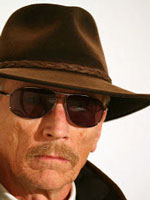
My next camera is going to be a main brand, full-frame, mirrorless, high resolution camera. The choice of brand will be decided by DxO Labs, the presently only trustworthy source for objective evaluation of image quality. The brand decision is going to be based on camera sensor performance as well as performance of available lenses.
Automatic camera controls have today reached a point where there is rarely a need to shoot in any other than program mode. This includes flash photography in program mode which outperforms most attempts to outsmart the camera by using a manual or semi manual mode, except possibly in a stable and controlled studio environment.
Most cameras are programmed to depict a chosen image in a full width histogram. In other words the camera automation tries to produce a normal daylight exposure of the scene. If you shoot much in low light conditions this does present a problem in that the camera overexposes parts of the scene trying to make a fully lit image out of the entire scene. I have long wondered why there isn’t an ”as is” setting on our cameras, reproducing the scene exactly as is.
As far as mechanical dials, I would like my new camera to have three small dials. One for ISO, one for aperture and one for exposure time. In addition to available numerical selections these dials should all have an individual setting A, for automatic. In other words one or all of the three main camera controls can be set to a specific value or to automatic.

One of the custom settings that I would activate is to convert the ISO dial, the exposure dial and the aperture dial to set a permissible range for these functions while leaving the camera free to optimize within those limits. When shooting in low light I would simply set the aperture limit to a fully open aperture.
Another custom setting that I use today is to trigger AE when pressing the shutter release half way. In addition I would like to see a custom flash setting where the test flash and AE is triggered when pressing the shutter release half way.
While I am envisioning the evolution of cameras from clunky old DSLR cameras toward more contemporary devices, smartphones will evolve in the opposite direction from phones with primitive camera functions toward photographically enabled and capable devices.
For everyday runaround I wouldn’t mind also owning one of these smartphones with emphasis on high quality photography using an EVF for viewing, image inspection and more.
This device would only have three buttons; menu, OK and shutter release. Setting up the camera portion should be possible via the touch panel or through the EVF.
The EVF should feature sight recognition knowing what you are looking at. While viewing the camera menu through the EVF you simply locate what you want and press OK. While viewing a scene the same procedure would be used to change the area of light metering, the desired focal point, etc.
Otherwise you just click away, optionally sending the images directly into Lightroom at your home or office.


